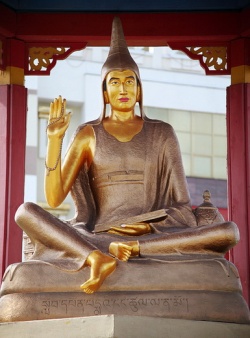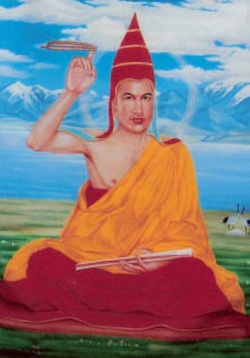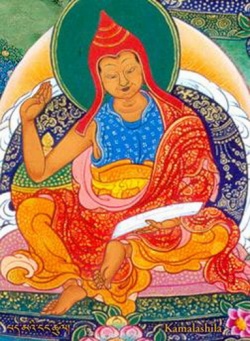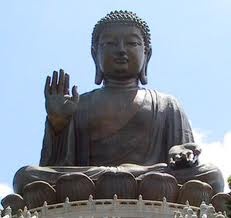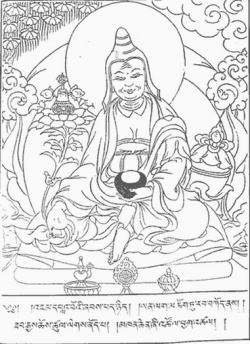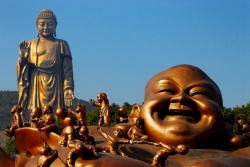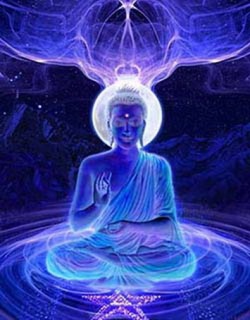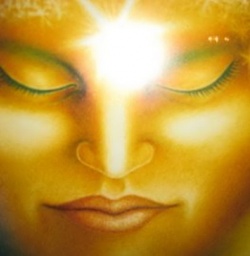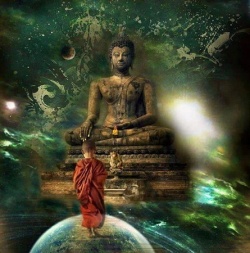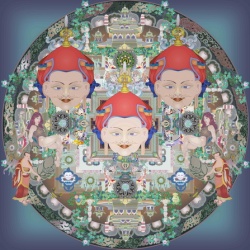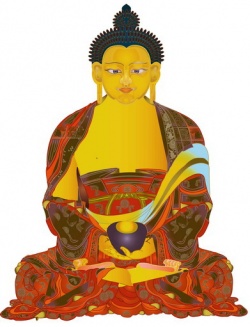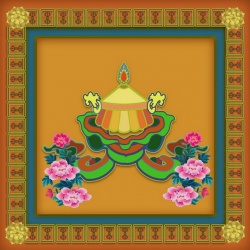Bhāvanākrama: Ācārya Kamalaśīla’s views on the path to Buddhist Enlightenment
Bhāvanākrama:
Ācārya Kamalaśīla’s views on the path to
Buddhist Enlightenment
MIN BAHADUR SHAKYA[1]
INTRODUCTION
Bhāvanākrama (stages of meditation) which was written in the eighth century by the Indian Buddhist scholar Kamalaśīla at the request of the Tibetan King Trisong Detsen, is one of the gems of Buddhist literature.
Ācārya Kamalaśīla was one of the great Indian masters who brought Buddhism to Tibet. The commentary he wrote on Śāntarakṣita’s Tattvasaṃgraha demonstrates his acuteness of thought and his versatility as a logician. Although, he is not the best-known Buddhist missionary to Tibet, his work there and most particularly his writing firmly established Buddhism in the hearts of Tibetans. Arguably Ācārya Kamalaśīla and his teacher Bodhisattva Śāntarakṣita should be credited with propagating, preaching and developing Buddhism in Tibet in all its purity and authenticity.
It is recorded that shortly before Śāntarakṣita passed away, he advised the Tibetan king that because dispute over Buddhist doctrine was likely to arise in Tibet, he should invite his disciple, Kamalaśīla, from India to resolve it.
A short biographical account of the great master, the circumstances in which he composed this text, and its impact on Tibetan Buddhist tradition, is in order.
BIOGRAPHY OF KAMALAŚĪLA
There is no definite information on his date of birth, birthplace or parentage in the Indian sources. What little is known is drawn from the Tibetan sources. He is believed to have been born in 720.[2] Sarat Chandra Das has suggested that he achieved fame as a philosopher in the Indian city of Magadha. A number of his works on Tantra have survived, and it is thought that at one time he taught Tantra in the Buddhist university of Nālandā.[3]
Kamalaśīla was a disciple of Ācārya Śāntarakṣita. After the death of his guru, he went to Tibet at the invitation of the Tibetan king Thri song De’u btsan (742-798). Rajendra Ram suggests that he traveled by way of Nepal to Tibet[4]; however, no source confirms that he did so.
His surviving works include:
- On Mādhyamaka
- 4. Madhyamakālaṅkārapañjikā
- 5. Madhyamakālokanāma
- 6. Tattvālokanāmaprakaraṇa
- 7. Sarvadharmaniḥsvabhāvasiddhi
- 8. Bodhicittabhāvanā
- 9. Bhāvanākrama (in three volumes)
- 10. Bhāvanāyogāvatāra
- On Sūtra Commentaries
- On Lekha
- On Pramāṇa
Unfortunately none of these works is preserved in the original Sanskrit but only in Tibetan translation.
Kamalaśīla’s visit to Tibet
According to Petech, the reign of king Khri-srong lde btsan marked the zenith of Tibetan power and the affirmation of Buddhism as the chief religion of the state. It was in this period that Tibet established an “indirect influence on the ultimate destiny of Central Asia through the elevation of Buddhism to the status of state religion of Tibet.” The king decided to organize a debate between the Chinese master Hva-shang Mahāyāna and the Indian master Kamalaśīla in order to bring clarity to a very confused doctrinal situation.
According to Sarat Chandra Das provides the following account, (the king) sent messengers to Magadha to bring Ācārya Kamalaśīla. Hva-shang, (the Chinese Ch’an master who was in Lhasa at that time) became very much concerned at the king’s encouragement of the Indian school. He began to teach the dharma by explaining the larger yum, prajñāpāramitā (Śatasāhasrikā?), and other abstruse works in his own idiosyncratic manner. Rejecting the śāstras, he insisted that the only correct religious practice was to lie down and be perfectly still. Dhyāna was simply a state of total passivity, and all discussion of doctrine was to be avoided.
- There was no basis for this approach in the Buddhist scriptures. Rather, it existed only in Hva-shang’s imagination. Wherever the eighty sūtrāntas, which the Buddha delivered and which are the foundation of Mahāyāna Buddhism disagreed with his ideas, he rejected them. When the Tibetan monk Ye-shes dvan-po informed the king about the views of the Indian philosopher, he was much impressed by them and announced, “you (Kamalaśīla) are my Ācārya.
King Trisong Detsen arranged a debate between the followers of Ācārya Śāntarakṣita, led by Ācārya Kamalaśīla and Chinese Hva-shang in Samye monastery, south of Lhasa, in order to decide which approach (gradual or sudden) should be permitted to take root in Tibet. The King invited Kamalaśīla to represent the Indian Buddhist School (gradual) while Hva Shang Mahāyāna represented the Chinese Ch’an School (sudden).
The Great Debate at Samye (792-794 AD)
It is reported that when Kamalaśīla and Hva Shang Mahāyāna first met in Samye, Kamalaśīla twirled his rosary around his finger, thereby posing the question, “What is the source of the cycle of saṃsāra?". Seeing this, Hva Shang is said to have covered his head, indicating that “ignorance is the source of suffering.” Kamalaśīla then felt that Hva Shang Mahāyāna was someone who understood the Buddha’s teaching.
The events of this famous debate, which are recorded in all the official Tibetan Chronicles, provide the focus of a major work by Professor Demieville.[7] According to the rules adopted for the debate, the winner’s approach to Buddhism would be endorsed by the King and the loser would have to leave the country. Thus, after Kamalaśīla and the Indian Buddhist School won the debate, Ch’an Buddhists were no longer allowed to proselytize in Tibet.
It appears that the Ch’an tradition that had been practiced in Tibet during Śantarakṣita’s accendancy (743-762 AD) had changed markedly by the time Kamalaśīla reached Tibet. The (later) Ch’an placed great emphasis on rejecting all forms of thought, not just in the context of a specific practice, but as a philosophical position, i.e. they took the doctrine of emptiness to its most nihilistic conclusion.
It was this nihilism that Kamalaśīla attacked.
Sarat Chandra Das’s account of his refutation of the Chinese position is based on Tibetan sources.
- When Kamalaśīla arrived, the debate between the two schools (Chinese and Indian) was joined. The king, taking his seat in the middle of the hall, presided as adjudicator. Hva-shang headed the eight rows of seats on the king’s right which were allotted to his followers, and the Indian Ācārya sat at the head of the left bank of seats filled with Tsen min-pa.
The king placed a garland in the hands of each of the principals and announced that he who suffered defeat in the debate should present his garland to the winner, and leave the country forever.
- Hva-shang Mahāyāna spoke first: “When virtuous or sinful acts are performed the result is either transportation to heaven or damnation in hell. Neither could liberate the sattva from worldly existence. Both would be obstructions to the attainment of Buddhahood (nirvāṇa). To exemplify this, the sky becomes equally obscured, whether the cloud that obscures it is a white or black. Therefore one should not think about anything at all. If the mind remains absolutely free from thought, i.e inactive, then contemplation from bhava (worldly existence) is possible. Avikalpanā (absence of mental activity) is identical to nirālambha, (total freedom from thought).”
- Kamalaśīla countered, “To say that it is possible to be free from thought, i.e., to be in a state of absolute mental inactivity, is to reject [the concept of] pratyavekṣaṇa prajñā, (discriminative wisdom/knowledge derived from the critical examination of phenomena).
But the root of samyak jñāna (perfect wisdom) is pratyavekṣaṇa prajñā.
Therefore, to reject it is tantamount to rejecting lokavigata prajñā (wisdom that transcends the faculties of man and god).
- Without pratyavekṣaṇa prajñā (discriminative wisdom), how can the Yogī find himself in the state of avikalpanā (without mental activity)?
- If there were absolute inactivity of mind so as to cause unconsciousness, i.e., loss of the power of cognition of all external or internal phenomena, which is to be devoid of knowledge, mental activity would be in competition with mental passivity.
- By thinking the thought, ‘I must not remember any dharma’, I am subverting my determination not to think, and as a result my memory is reactivated with greater force.
- If the mind enters a state of unconciousness i.e, its functions are paralyzed, it may be temporarily freed from vikalpanā, i.e., for a time it may remain in a state of mental inactivity.
- But without pratyavekṣaṇa prajñā it is impossible to attain freedom from vikalpanā.
- If the faculty of memory is suspended and pratyavekṣaṇa prajñā is absent, it is impossible to grasp that sarvadharma (all phenomena) are by their nature void and impermanent. Only if pratyavekṣaṇa prajñā is attained, may the obfuscating process that is constantly at work be terminated.
- Therefore, it is only by pratyavekṣaṇa prajñā that false notions may be thrown out. To claim that remembering everything and forgetting everything at one and the same time is possible is clearly a contradiction.
- Memory and total mental inactivity cannot co-exist. The former constitutes activity and the latter its negation which, according to Hva-shang, must be acquired. But it is impossible for the two to co-exist.
- How can pūrvasthāna anusmaraṇa (memory of one’s place and condition) be obliterated?
- It is by discriminating thought that the Yogī acquires samyak jñāna and it is by meditating on inner and outer phenomena in reference to the three times that he loses vikalpanā (mental activity) and thus frees himself from erroneous concepts and false views.
- Being well-equipped with upāya and jñāna, he frees himself from darkness and attains sambodhi dharma (the state of supreme enlightenment).
- The outcome of the Great Debate was that Tibet adopted Indian rather than Chinese Buddhism. “According to the Tibetan historians, this philosophical debate leading to Kamalaśila’s victory was an important moment in the religious history of Tibet.” [8] However, the victory of Indian Buddhism in Tibet cost Kamalaśīla his life. Four butchers were sent by Hva-shang Mahāyāna to kill Ācārya Kamalaśila by squeezing his kidneys.[9]
Many mistakenly believe that Kamalaśīla’s philosophical position outlined above was the only one propounded in the Samye Debate, and this is the reason why Tibetan Buddhists accepted it.
However in a dialogue between HH Dalai Lama and Ch’an Master Sheng Yen, Master Shen Yen said:
- I am very grateful to His Holiness for bringing up the subject of the Chinese master Hva shang. From the story [of the Great Debate), it seems that those Chinese monks during the time of Kamalaśīla were not qualified to represent Ch’an[10].
- (However) In the Dunhuang Caves… Buddhist scholars have found ancient texts relating a story about the first Chinese monk who greatly influenced Tibetan Buddhism, in particular in the practice of meditation. So maybe the first Chinese master who went to Tibet who pre-dated Hvasang Mahāyāna) wasn’t so bad after all!
- Prior to arrival of Hvasang Mahāyāna, the first Chinese monk, whose name was unknown, was to represent the Ch’an school in Tibet. He seems to have been supported in his views by some Tibetan Masters notably by Nam mK’a’ sNying po (Ākāśagarbha of gNubs) who was himself a well known master of Ch’an as evidenced by texts published by M. Lalou in which his connection with Ch’an teachers, who considered themselves the spiritual descendants of Bodhidharma, is noted.[11]
KAMALAŚĪLA’S BHĀVANĀKRAMA
Kamalaśīla wrote his Bhāvanākrama in Tibet itself, bearing in mind the requirements of his Tibetan audience. Bhāvanākrama is the first Sanskrit text written by an Indian Buddhist Master in Tibet. It is composed of three chapters in Sanskrit. No complete Sanskrit manuscript of Bhāvanākrama survived in its land of origin. Prof. Tucci obtained Sanskrit redactions of Chapter One in Tibet and of Chapter Three in Russia, both of which he published in Romanized Sanskrit.[12]
A brief overview of Kamalaśīla’s conception of the path to Enlightenment according to his Bhāvanākrama.
Outline of meditation practice for the Bodhisattva who resolves to realize perfect enlightenment (ādikarmika).
- A. Meditation on Great Compassion (karuṇā bhāvanā)
- B. Generation of Bodhicitta (bodhicittotpāda)
- C. Importance of Practice (pratipatti)
- D. Meditation on Calming the Mind (samatha)
- E. Meditation on Discriminative Wisdom (vipaśyanā)
- F. Accumulation of Merits (dvaya saṃbhāra)
- G. Practice of Skill in Means (upāyakauśalya)
- H. Attainment of Perfect Enlightenment as a result by integrated practice of Wisdom and compassion (buddhattva phala prāpti)
A. Meditation on Great Compassion
According to Kamalaśīla, the first requisite for a Bodhisattva is to develop great compassion by observing the suffering of the six realms. He must have great determination to relieve all sentient beings who are beset with three kinds of suffering.
To begin with, he must consider first his friends, then his enemies, and then ordinary people. Next, he should generate great compassion for all sentient beings of the ten directions. In the same way that a mother seeks to relieve the pain of her child, he should generate compassion to relieve the sufferings of all sentient beings.
B. Generation of Bodhicitta[13]
By generating great compassion, Bodhicitta, a prerequisite of perfect enlightenment, spontaneously arises. Bodhicitta is the desire for all sentient beings to attain perfect enlightenment. There are two kinds of Bodhicitta, ‘wishing’ and ‘engaging’. Though there are many benefits from wishing for/aspiring to Bodhicitta, the benefits of ‘engaging’ Bodhicitta are innumerable.
The sādhaka who practices ‘engaging’ Bodhicitta, practices meditation on the six perfections for the accumulation of merit and wisdom. In a lucid prose style, Kamalaśīla supports his thesis with many references culled from the sūtras including Dharmasaṅgīti, Ārya viradatta paripṛcchā, Akṣayamatinirdeśa, Ārya Śraddhābalādhāna.
C. Importance of Practice (pratipatti)
Unless he disciplines himself, the Bodhisattva who practices Bodhicitta cannot discipline others. So first he must practice generosity, and so forth. His practice will be purified only if supported by wisdom.
The Bodhisattva should establish himself in non-abiding nirvāṇa (apratiṣṭha nirvaāa). The practice of Śūnyatā alone does not lead to Perfect Enlightenment. For this, three modes of wisdom are required: listening (Śrutamayī), contemplation (cintāmayī) and insight (bhāvanāmayī). The Bodhisattva should first listen closely to the Buddha’s teachings in order to understand their intent. Through correct reasoning, he will be able to understand them at different levels. Having acquired knowledge through correct reasoning, he should meditate deeply in order to enhance his understanding of ultimate truth. The Bodhisattva’s meditation practice has many components: six perfections, four ways of gathering disciples, nurturing sentient beings, purification of Buddha lands, and so on, all of which may be classified into two groups: wisdom (prajñā) and skillful means (upāya). One must practice both together.
D. Meditation on Calming the Mind (samatha)
One should first practice samatha in order to maintain a calm mind. The Buddha taught that only with a calm mind one may see things as they really are. Diligent practice is necessary for the maintenance of the calm mind.
The beginner Bodhisattva should start with short practices, live in a quiet place, to limit his needs to a minimum, practice contentment, engage in few activities, observe śīla, and free himself from attachments and obsessive thinking. Meditation is best performed in the full-lotus posture (paryañkāsana), like the Buddha, or in the half-lotus posture.
This assures steadiness and composure. One should meditate on the aggregates, sense spheres, and elements of existence. Should one’s mind be afflicted by desire and so forth, one should meditate on physical impurities. If the mind holds back from practicing samādhi, one should meditate on the merits of practicing samādhi. By focusing on an antidote, one eliminates the five hindrances, and one’s capacity to practice samatha meditation develops.
E. Meditation on Discriminative Wisdom (vipasyanā)
Once the mind is focused on the object of meditation one should analyze it by insight (vipassanā) to know its reality. Without insight, one cannot eradicate the roots of delusion. Thus one should develop discriminative wisdom by analyzing the object of meditation.
With the help of a spiritual friend, support of learned ones, and yoniśo manasikāra (three accumulations of insight), one perceives the lack of selfness in people and phenomena.
This is made possible by special insight alone. This is confirmed in the Ārya Sandhinirmocana sūtra. All phenomena are made up of the five aggregates, twelve sense spheres and eighteen elements of existence. So also is the mind. When one perceives that the mind has no innate existence one understands that it is an illusion.
Through the use of analytical insight one see that phenomena have no inherent existence. Only then can one enter into samādhi free of all concepts (nirvikalpa).
The analysis and investigation of the nature of phenomena require the application of both reason and scriptural knowledge during meditation on selflessness. However the Chinese monk Hva-shang, mistakenly followed the path of inactivity in the belief that it would result in liberation from saṃsāra.
In refuting this position, Ācārya Kamalaśīla provides many arguments and scriptural references. He suggests that one keep one’s distance from those who oppose his views on the grounds that they have little understanding, are self-absorbed, unmindful of teachers and scholars, reject the Tathāgata’s moral injunctions, and are destructive of themselves and other people.
F. Accumulation of Merits (dvaya sambhāra)
Although all phenomena lack ultimate inherent existence they exist conventionally. People who have difficulty in understanding the selfless nature of phenomena suffer greatly.
Thus one should generate compassion and aspire to attain perfect enlightenment on their behalf. To this end, one should accumulate merit by reciting samantabhadra’s aspirational prayer, performing all six perfections, and so forth.
G. Practice of Skill in Means (upāyakauśalya)
Nurturing sentient beings, purifying Buddha fields, and attaining omniscient wisdom are the results of practicing the six perfections with skillful means. Thus the Bodhisattva should discipline himself by practicing wisdom and skill in means together.
If separated, liberation cannot be attained. Only with unified practice shall the Bodhisattva attain nonabiding nirvāṇa.
As Ārya Maitreyanātha says in his Abhisamayalaṅkāra:
- Through the force of wisdom, one does not fall into Saṃsāra And through the force of compassion one does not stay in peaceful Nirvāṇa.
This truth is presented in many sūtras including the Vimalakīrtinirdeśa, Akṣayamatinirdeśa, Sagaranāgarāja paripṛcchā, Gayāśīrṣa, and so forth.
H. Attainment of Perfect Enlightenment as a result of integrated practice of Wisdom and Compassion (Buddhattva phala prāpti)
If the Bodhisattva’s practice is enriched by great compassion, Bodhicitta, and skill in means, his dharma life will be superb. He will have visions of Buddhas and Bodhisattvas even in dreams; he will accumulate great merit and wisdom.
His delusions and other obstructions will be cleansed. He will develop special powers, such as clairvoyance. He will travel to innumerable worlds, make offerings to Buddhas, and hear their teaching. Reaching the highest spiritual sphere, he will meditate on the transcendent wisdom of the path of meditation.
In order to attain this highest level, he must practice diligently at the lower level. When the transcendent wisdom of the Tathāgata is attained and one enters the ocean of omniscience, all one’s objectives will be met. By these practices, the mind stream is thoroughly purified.
The Ārya Saṃdhinirmocana sūtra reads:
- Focus the mind on higher and higher spiritual sphere which are like gold. Unsurpassable and perfectly consummated Buddhahood can then be realized.
CONCLUSION
The purpose of my article is not to glorify the Indian Buddhist School or to denigrate the Ch’an School but rather, to outline those key practices that Bhāvanākrama presents. Owing to a lack of dialogue between the Tibetan and Ch’an masters these precious teachings of the Buddha were lost to both traditions.
REFERENCES
- Tucci, Guissepe, (ed). 1978 - Minor Buddhist Texts. Motilal Banarsi Das: Delhi
- Sharma, Paramananda, (tr). 1997 - Bhāvanākrama of Kamalaśīla. Aditya Prakashan: Delhi
- Gyaltsen, Namdrol, (ed). 1985 - Bhāvanākrama. Central Institute of Higher Tibetan Studies: Sarnath
- Lhakdor and Lobsang Chopphell (tr.). 1997 - Kamalaśīla’s Bhāvanākrama: The Middle Meditation Stage,
- Jordhen, Geshe Lobsang, Ganchenpa, Losang Choephel, and Russell, Jeremy (tr.). 2001 - Stages of Meditation by H. H. Dalai Lama. New York: Snow Lion Publications.
Footnotes
- ↑ Director of Nagarjuna Institute of Exact Methods, P. O. Box 100, Chakupat, Lalitpur, Nepal.
- ↑ H.D.Sankalia, p.122; E. Kïïïamïcïrya (ed) Tattvasaṃgraha, p.xix
- ↑ Vidyïbhïïaïa:op.cit.p.327
- ↑ Rajendra Ram: A History of Buddhism in Nepal (1977), p.49
- ↑ This text is extant in original Sanskrit and has been published by three publishers. Among all other work the voluminous commentary of Tattvasaïgraha called Tattvasaïgrahapañjikï is a monument of his great learning and scholarship.
- ↑ Haraprasad Sastri :Bauddha Gan O Doha, app p.16,Cordier: Catalogue du Fonds Tibetain Vol III.287,288,289; and Vidyïbhïïaïa: Indian Logic; 129-130
- ↑ Le concile de Lhasa, Une controverse sur la quitetisme entre Bouddhistes de l’Inde et de la Chine du VIII siecle de l’Ere chretienne.Bibl.Institut des Houtes Etudes chinoise, vol VII, Paris 1952.
- ↑ H.Hoffmann, p.78; A.Chattopadhyaya,p.249
- ↑ A.Chattopadhyaya,p.78.Some says that the story of the murder of Kamalaśila, as a vengeance of the chinese master, was perhaps concocted later on.The killers of the Indian Païïitas were according to Ba zhed the Mu-stegs pa; these, as is well known, are not buddhists , but tïrthika, heretics.
- ↑ It seems that Hva shang Mahayana was one of the sevenfold Chinese emanations descended from Khenpo Dharmottarala see.G.Tucci on Minor Buddhist Texts p.391
- ↑ Namkhai Nyingpo is recorded in the Nyingma literature i.e Nyingma rgyud ‘bum, the most authorative tantra texts of rDzog Chen sect.
- ↑ The second chapter was retranslated from Tibetan into Sanskrit and then into Hindi by Acarya Gyaltsen Namdrol, and published by the Central Institute of Higher Tibetan Studies, Sarnath, 1985.
- ↑ See HH Dalai Lama’s Activating Bodhicitta in Meditation on Compassion. LTWA: Dharamshala.
